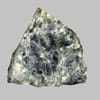Definition
Dunite is a green to brownish coarse-grained igneous rock mainly consisting of olivine
Dolomite is a sedimentary rock containing more than 50 percent of the mineral dolomite by weight
Origin
New Zealand
Southern Alps, France
Discoverer
Ferdinand von Hochstetter
Dolomieu
Etymology
From the name of Dun Mountain, New Zealand, + -ite1
From French, from the name of Dolomieu (1750–1801), the French geologist who discovered the rock
Class
Igneous Rocks
Sedimentary Rocks
Sub-Class
Durable Rock, Medium Hardness Rock
Durable Rock, Medium Hardness Rock
Group
Plutonic
Not Applicable
Other Categories
Coarse Grained Rock, Opaque Rock
Coarse Grained Rock, Fine Grained Rock, Medium Grained Rock, Opaque Rock
Texture
Phaneritic
Earthy
Color
Dark Greenish - Grey
Black, Brown, Colourless, Green, Grey, Pink, White
Durability
Durable
Durable
Scratch Resistant
Yes
Yes
Appearance
Rough and Shiny
Glassy or Pearly
Interior Uses
Decorative Aggregates, Interior Decoration
Decorative Aggregates, Homes, Interior Decoration
Exterior Uses
As Building Stone, As Facing Stone, Garden Decoration, Paving Stone
Garden Decoration, Office Buildings
Other Architectural Uses
Curbing
Not Yet Used
Construction Industry
As Dimension Stone, Cement Manufacture, Construction Aggregate, for Road Aggregate, Making natural cement, Raw material for the manufacture of mortar
As a Flux in the Production of Steel and Pig Iron, As a Sintering Agent in Steel Industry to process Iron Ore, As Dimension Stone, Cement Manufacture, for Road Aggregate, Making natural cement, Manufacture of Magnesium and Dolomite Refractories, Production of Glass and Ceramics, Serves as an Oil and Gas Reservoir rock
Medical Industry
Not Yet Used
Taken as a Supplement for Calcium or Magnesium
Antiquity Uses
Artifacts, Monuments, Sculpture, Small Figurines
Artifacts, Jewellery, Monuments, Sculpture, Small Figurines
Commercial Uses
Creating Artwork, Gemstone, Jewelry, Source of Chromite, Platinum, Nickel and Garnet, Source of Diamonds
An Oil and Gas Reservoir, As a Feed Additive for Livestock, Gemstone, Metallurgical Flux, Production of Lime, Soil Conditioner, Source of Magnesia (MgO)
Types
Not Available
Boninite and Jasperoid
Features
Constitutes upper part of the Earth's mantle, Generally rough to touch, Host rock for Diamond, Is one of the oldest rock
Host Rock for Lead, Traps for subsurface fluids like Oil and Natural Gas., Zinc and Copper Deposits
Archaeological Significance
Famous Monuments
Data Not Available
Data Not Available
Famous Sculptures
Data Not Available
Data Not Available
Formation
Dunite is a plutonic ultramafic igneous rock consisting almost m olivine. It can be formed in two ways.
Dolomite rocks are originally deposited as calcite or aragonite rich limestone, but during diagenesis process, the calcite or aragonite is transformed into dolomite.
Mineral Content
Amphibole, Chromite, Garnet, Magnesium, Olivine, Phlogopite, Plagioclase, Pyroxene
Clay Minerals, Pyrite, Quartz, Sulfides
Compound Content
Ca, CaO, Fe, Potassium, Silicon Dioxide, Sodium, Titanium Dioxide
NaCl, CaO, Carbon Dioxide, Magnesium Carbonate, MgO
Types of Metamorphism
Burial Metamorphism, Cataclastic Metamorphism, Contact Metamorphism
Burial Metamorphism, Cataclastic Metamorphism, Contact Metamorphism
Types of Weathering
Biological Weathering, Chemical Weathering, Mechanical Weathering
Not Applicable
Types of Erosion
Coastal Erosion, Glacier Erosion, Water Erosion
Not Applicable
Grain Size
Coarse Grained
Medium to Fine Coarse Grained
Fracture
Irregular
Conchoidal
Porosity
Less Porous
Less Porous
Luster
Shiny
Vitreous and Pearly
Cleavage
Imperfect
Perfect
Specific Gravity
3-3.01
2.8-3
Transparency
Translucent to Opaque
Transparent to Translucent
Density
2.84-2.85 g/cm3
2.8-2.9 g/cm3
Resistance
Heat Resistant, Pressure Resistant, Wear Resistant
Heat Resistant, Pressure Resistant, Wear Resistant
Deposits in Eastern Continents
Asia
China, India, Indonesia, Kazakhstan, Russia, South Korea, Thailand, Turkey
China, India
Africa
Morocco, South Africa
Morocco, Namibia
Europe
Finland, France, Georgia, Germany, Great Britain, Italy, Kazakhstan, Netherlands, Norway, Spain, Switzerland, Venezuela
Austria, Italy, Romania, Spain, Switzerland
Others
Not Yet Found
Not Yet Found
Deposits in Western Continents
North America
Canada, USA
Mexico, USA
South America
Argentina, Brazil, Colombia, Ecuador, Venezuela
Brazil, Colombia
Deposits in Oceania Continent
Australia
New Zealand, Western Australia
New South Wales, Queensland, Yorke Peninsula
All about Dunite and Dolomite Properties
Know all about Dunite and Dolomite properties here. All properties of rocks are important as they define the type of rock and its application. Dunite belongs to Igneous Rocks while Dolomite belongs to Sedimentary Rocks.Texture of Dunite is Phaneritic whereas that of Dolomite is Earthy. Dunite appears Rough and Shiny and Dolomite appears Glassy or Pearly. The luster of Dunite is shiny while that of Dolomite is vitreous and pearly. Dunite is available in dark greenish - grey colors whereas Dolomite is available in black, brown, colourless, green, grey, pink, white colors. The commercial uses of Dunite are creating artwork, gemstone, jewelry, source of chromite, platinum, nickel and garnet, source of diamonds and that of Dolomite are an oil and gas reservoir, as a feed additive for livestock, gemstone, metallurgical flux, production of lime, soil conditioner, source of magnesia (mgo).










